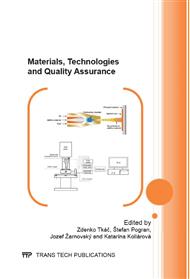p.51
p.61
p.67
p.75
p.81
p.87
p.95
p.103
p.109
Analysis of Risk Using FMEA
Abstract:
Failure mode and effects analysis (FMEA) was performed in RIBE Slovakia, k.s. (limited partnership) in Nitra, Slovakia. Analysis was done in the process of cold forming where potential errors (failures) were identified. Subsequently, there was assigned a mark in the FMEA form expressing severity, frequency and undetectability, and a risk priority number (RPN) was calculated. If the risk priority number (RPN) is too high, corrective measures are proposed and adopted in order for the risk to be minimized or completely eliminated.
Info:
Periodical:
Pages:
81-85
Citation:
Online since:
September 2013
Authors:
Keywords:
Price:
Сopyright:
© 2013 Trans Tech Publications Ltd. All Rights Reserved
Share:
Citation:


